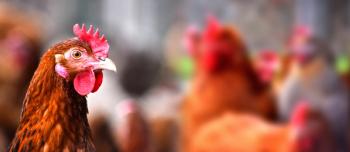
Evaluating new COVID-19 research
The barrage of COVID-19 research has begun, including studies that have not yet been qualitatively reviewed for the validity of findings or suitability for publication. Here's what you should keep in mind.
Editor’s Note: Ontario veterinarian Scott Weese, DVM, DVSc, DACVIM, is one of the coordinators of the
In light of the speed at which research on COVID-19 is being disseminated right now, it’s important for veterinary professionals to understand how to evaluate what they are reading and hearing about. The fact is, because of the urgency surrounding the pandemic, much of this nascent research is being shared before it has undergone the peer review process.
In a recent blog post, Dr. Weese does an outstanding job of detailing a promising new COVID-19 study from France while also explaining why certain aspects of this and other new research should be assessed with a discerning eye. This article is adapted with permission from the Centre for Public Health and Zoonoses.
______________________________________________________________________________________________
Another day, some new data … a few answers and more questions. So, pretty much a normal day.
A new pre-print article from the Pasteur Institute in France looked at
- Two of the students were diagnosed with COVID-19, and 11 others had had respiratory disease and were suspected cases.
- Nine cats and 12 dogs living with those students were tested for virus shedding by polymerase chain reaction as well as for the presence of antibodies in blood.
- All of the pets tested negative for SARS-CoV-2.
That’s encouraging, but there are a few things to consider:
- One is the small sample size. It’s a start, but we need larger studies. If we look at cats, the species we’re most concerned about, the prevalence was 0/9. However, the confidence interval would be 0% to 23%. That means the percentage of infected animals is predicted to fall between 0% and 23%. The greater the sample size, the more confident we can be that a zero result is truly zero. A prevalence study of the gender of Canadian kids conducted in my house would yield a result of 0/3. Since I’m pretty sure boys aren’t extinct, we can take comfort in a confidence interval that shows a lot broader estimate.
- Another thing that makes the study hard to interpret is the lack of information about which animals had contact with infected (or suspected infected) owners. We know there were two confirmed and 11 suspected cases, but we don’t know how many of the animals were owned by the 13 confirmed/suspected infected students versus the seven students who were not sick. It’s not clear whether nine cats truly means nine cats that were likely exposed (it might … it’s just impossible to say from the description).
So, the study provides some information and it’s good to see a zero prevalence in the animals. We just have to make sure we don’t over-react to this, just like we don’t want people to over-react to finding SARS-CoV-2 in an animal. It’s one more small step in the process, and we need bigger studies. That’s not easy, since getting into infected households to test animals is a challenge (as I know from our work).
There’s been an unprecedented amount of research done on SARS-CoV-2 and the number of publications that have arisen in a short time is astounding. At the same time, there’s a massive race to be first, leading to issues such as superficial studies or downright wrong conclusions (this isn’t directed at this French study; it’s just a general statement and an issue we need to consider).
Many papers are getting uploaded to pre-print sites like
The early suggestion that
It’s just like breaking news on media sites. We need to pay attention because even though important early information may be available, the rush to get out the breaking story sometimes results in errors, and some breaking news ends up being—I cringe to use the term—fake news. So, we need to keep the information coming but still need to scrutinize all the information we’re getting.
Scott Weese, DVM, DVSc, DACVIM, is professor of internal medicine, zoonotic disease, public health and microbiology at the University of Guelph Ontario Veterinary College.
Newsletter
From exam room tips to practice management insights, get trusted veterinary news delivered straight to your inbox—subscribe to dvm360.






